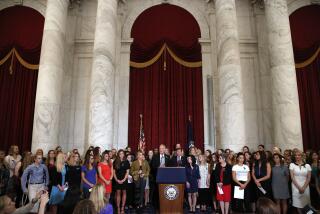Exiting the Asbestos Trap
Little more than three months after the terrorist attacks, those who lost parents, children and spouses are learning how much they are likely to receive from a federal fund that Congress created to help them recover financially and emotionally. The amounts they could get in the coming months, averaging $1.6 million, will not make up for a husband’s absence or a daughter’s life cut short. But the families of the almost 3,000 who perished Sept. 11 will be far better off than many asbestos victims or their survivors and will suffer far shorter waits.
Asbestos is a naturally occurring fiber that until the mid-1970s was used in products as an insulator and a fire retardant. But because breathing asbestos fibers can cause crippling respiratory diseases including cancer, the lasting legacy of asbestos has been an endless litigation nightmare. More than 575,000 people have filed injury claims. The economic toll of asbestos injury could hit $200 billion, including lost wages and medical expenses, costs to corporations and legal fees.
Decades of litigation have produced needless delays and humiliations. Some victims died before a verdict or settlement was reached. Defendant companies sometimes aggressively challenged even workers felled by mesothelioma, a form of cancer nearly always fatal and nearly always caused by asbestos. Decisions on compensation have swung wildly. Last summer, a Texas jury awarded $55.5 million to a 47-year-old man with mesothelioma, the father of four; other victims received a few thousand dollars. The bankruptcies of some 42 companies that made or sold asbestos products have slowed resolution.
Deciding which of dozens of companies should pay the medical costs for individual workers has been time-consuming and contentious. Many plaintiffs are sick. Others are not sick now but have bad odds. Some with questionable claims have been encouraged by lawyers for whom asbestos litigation is a long-term, lucrative line of work.
Those difficult issues should not stop Congress from crafting a settlement process that would allow asbestos victims to get faster, fairer compensation without courtroom battles. The Sept. 11 fund, despite the differences in complexity and scale, provides a useful model. In exchange for promising not to sue, victims of the terror attacks will receive payment after providing evidence of injuries and losses. That process has shortcomings and is not welcomed by every family. But it provides the hope of paying victims with relative equity and in their lifetimes. We should be able to say the same about asbestos victims.
More to Read
Sign up for Essential California
The most important California stories and recommendations in your inbox every morning.
You may occasionally receive promotional content from the Los Angeles Times.









